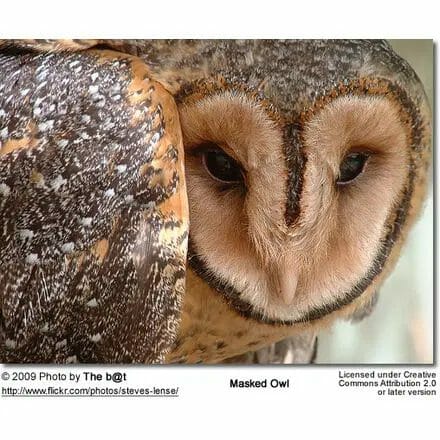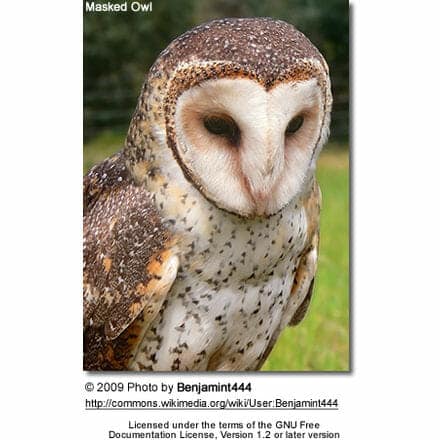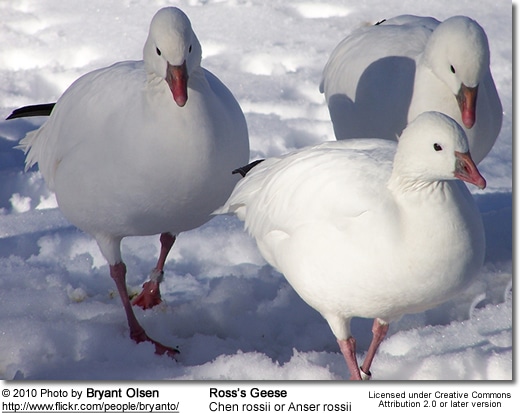Australian Masked Owls
The Australian Masked Owls (Tyto novaehollandiae) are resident (non-migratory) barn owls found in Southern New Guinea and the non-desert areas of Australia. They are also commonly referred to as “Mouse Owls” – as a large portion of their diet consists of mice.
They are one of Australia‘s largest owls, second only to the Powerful Owls.
Their preferred habitats are shrubs and bushes lands waterways with timber. In Australia, they are rarely found more than 300 km inland.
During the day, these nocturnal birds typically roost in large tree cavities near foraging areas.
More Owl Information
- Owl Information
- Index of Owl Species with Pictures
- Owl Eyes / Vision Adaptations
- Pygmy Owls
- Barn Owls
- Horned Owls
- Scops Owls
Description
The Australian Masked Owls measure about 35 – 47 cm in length and weigh about 660 g. Females are generally larger than males.
The plumage is blackish brown with grey and white spots on the upper body, and paler underparts with brown spots. The facial disk is white bordered by short brown feathers forming a heart-shaped outline. The female is generally darker than the male.
Their dark brown or black-colored, forward-facing eyes are nearly as large as human eyes and are immobile within their circular bone sockets. For this reason, owls need flexible necks, as they have to turn their entire head to change views. They have the same number of vertebrae in their necks as most mammals and can move their heads 270 degrees in either direction (nearly all the way around!).

Most other bird species have their eyes on the sides of their heads enabling them to see sideways and, to some extent, backward. Owls, on the other hand, have both eyes in the front which enhances their depth perception.
Owls are far-sighted and are unable to clearly see anything within a few inches of their eyes. Their far vision – particularly in low light – is, however, exceptional.
To protect their eyes, Owls have 3 eyelids – one upper and one lower eyelid. The upper lid closes when the owl blinks, and the lower closes when the Owl sleeps.
The third eyelid – called a nictitating membrane – is a thin layer of tissue that closes diagonally across the eye, from the inside to the outside. The purpose of these membranes is to clean, moisten, and protect the surface of the eyes.


Breeding / Nesting
They breed throughout the year. Their nests are typically placed in hollow trees with soil, mulch, or sand.
The average clutch consists of 2 – 3 eggs, which are incubated by the females alone, while the males provide food to the nesting females.
The hatchlings are naked and their first feathers are white or off-white. They usually leave the nest when they are about two to three months old, but are still fed by their parents for another month before they are independent.
Diet / Feeding
These nocturnal birds mostly hunt at night, preying on rodents (including mice), reptiles, small birds, insects, and bandicoots (rat-like animals found in Australia).




